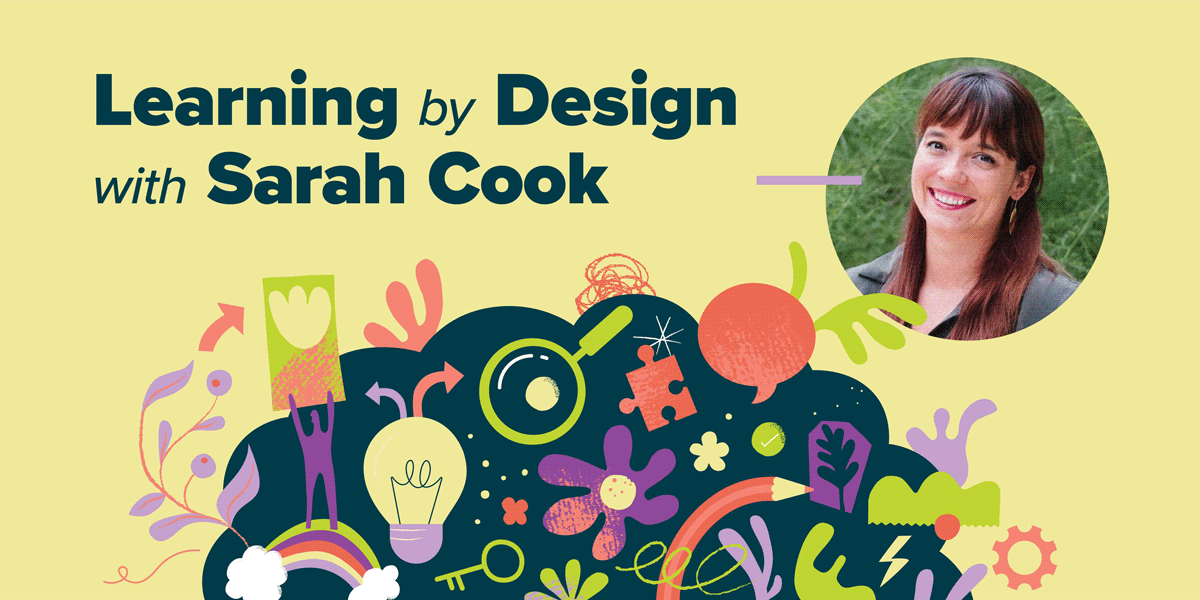Level Up Learning: Gamification in Learning Design

During my first year as a fourth-grade Spanish teacher, I noticed that one of my students seemed uninterested and disengaged in my class. When I asked a colleague for advice, they suggested that I observe the student on the playground to get a sense of who they were outside the classroom.
Later, as I watched this student play kickball, I discovered an entirely different side to them. They were excited, talkative, and proactively leading their classmates. The context of a game sparked an innate sense of joy and motivation that was missing in our traditional classroom setting.
Increasing Engagement with Gamification
When I became an instructional designer and learned about the concept of gamification, my experience with this student immediately came to mind. Gamification is the practice of applying game-playing elements like points, timers, badges, and leaderboards to non-game activities, including educational experiences.
Gamification is the practice of applying game-playing elements like points, timers, badges, and leaderboards to non-game activities, including educational experiences.
Research has demonstrated that gamification is a highly effective strategy for boosting engagement in learning. One study found that 79 percent of learners prefer gamified content over conventional content, with 65 percent reporting higher engagement levels when interacting with gamified materials. But why is this approach so impactful?
For one thing, gamification taps into both intrinsic and extrinsic motivators. Elements like badges, levels, and leaderboards satisfy our natural desire for accomplishment and recognition. Meanwhile, features like narrative storytelling, role-play, and customization foster creativity and personal connection to the content.
Gamification does not require creating a complex online game with a team of web developers; it can mean using game-play strategies to enhance traditional learning experiences. I view gamification elements as essential tools in my instructional design toolbox, providing inspiration to create more playful, enjoyable, and inclusive learning experiences. By purposefully adding these elements into learning experiences, we can also reach and inspire the learners, like my former student, who feel less connected to traditional education approaches.
Understanding Gamification: The Octalysis Framework
To understand how gamification drives student engagement, let’s explore one popular gamification framework: the Octalysis Framework for Gamification & Behavioral Design developed by Yu-kai Chou. This framework is built on eight core drivers of motivation, each of which offer a unique way to engage learners.
Below, I explain each core drive, how it shows up in learning experiences, and examples of instructional design strategies that tap into each drive.
Core Drive 1: Epic Meaning and Calling
So many books and movies (Harry Potter, The Lord of the Rings, Percy Jackson, The Hunger Games) begin with this idea: We must save the world, and you are the only one who can do it. The drive for epic meaning and calling speaks to our innate desire to be part of something bigger than ourselves. This is why learners often thrive when their actions are explicitly tied to a meaningful purpose.
For instructional designers, the key is storytelling. Crafting a compelling narrative that places learners in heroic roles can turn even routine tasks into something extraordinary. Imagine a training module for health care professionals framed as a quest to reduce global health disparities. Participants aren’t just learning—they’re saving lives, even if just hypothetically.
Core Drive 2: Development and Accomplishment
We all love the feeling of progress—ticking items off a to-do list, leveling up in a game, or receiving recognition for our efforts. The Octalysis Framework captures this drive through the lens of development and accomplishment. Learning environments that highlight achievements help learners build confidence and momentum.
In instructional design, we can track engagement and successful assessments using scaffolded achievement levels. For example, as learners move through a series of eLearning courses, they can earn badges and designations that celebrate and mark their progress in a playful way. This cumulative celebration of achievement counters the traditional approach to academic achievement that focuses on simply not getting questions wrong. By making progress visible and rewarding, we create a sense of forward motion that keeps learners engaged.
Core Drive 3: Empowerment of Creativity and Feedback
Empowering creativity and feedback gives learners the freedom to explore, experiment, and express themselves. This core drive demonstrates how gamification brings learning to life: It offers learners opportunities to practice skills and use their creativity while providing feedback so they can understand the effectiveness of their exploration.
…gamification brings learning to life: It offers learners opportunities to practice skills and use their creativity…
Imagine that you need to present a dense, complex process during an in-person workshop. To tap into this core drive, you might assign small groups to devise a creative way to demonstrate the process (a short skit, an infographic, etc.). As they work, you provide feedback and recommendations, encouraging them to make edits and additions to improve their understanding while celebrating their unique vision.
Core Drive 4: Ownership and Possession
When learners feel ownership over their learning journey, they become more invested. Customization is a straightforward but mighty tool toward this end. Allowing learners to pick their own learning paths—choosing modules or topics that spark their interest or advance their career goals—turns instructional design into a choose-your-own adventure. For instance, a health and safety course might allow participants to opt into a special lesson on workplace ergonomics, emergency response, or chemical safety, depending on their role.
Instructional designers can also encourage learners to create something over the course of the learning experience, such as an avatar, a poster, or a portfolio. Over time, a feeling of ownership and warmth for this item will grow.
Core Drive 5: Social Influence and Relatedness
Humans are social creatures, and social dynamics play a huge role in motivation, from solving problems with a team to earning praise from our peers. This core drive leverages our desire for connection, collaboration, recognition, and even competition.
When designing a workshop, integrate team-based challenges where groups solve problems together and compete for recognition. Leaderboards, peer recognition, or team quests can create a social fabric that motivates learners to excel. When I design eLearning modules, this drive reminds me to show learners that even though they are taking the course alone, they are part of a large and vibrant group of fellow learners.
Core Drive 6: Scarcity and Impatience
Scarcity taps into the idea that limited opportunities are more valuable. In gamified learning, this might look like challenges that reward quick responses or exclusive content. For instance, a timed quiz in a math course adds urgency, encouraging learners to focus and act quickly.
It is important to note that some learners find timed quizzes more stressful than helpful, so it is best to use timed activities and games as practice, not for final assessments.
Core Drive 7: Unpredictability and Curiosity
Curiosity is a powerful motivator. We’re wired to seek out the unknown, and gamification can harness this drive by introducing surprises and open-ended challenges.
Imagine a biology course that hides bonus quizzes in unexpected places. By weaving in elements of unpredictability, we keep learners engaged and eager to uncover what’s next. In instructional design, strategically introducing new slide designs or interactions for the learner is a great way to tap into this motivator.
Core Drive 8: Loss and Avoidance
This core drive focuses on our desire to make sure something negative does not happen. Avoiding negative experiences can be a strong motivator, but it should be used sparingly in learning experiences because it may create stress for the learner. This drive works best when balanced with positive reinforcement, encouraging learners to stay on track without creating undue stress.
In practice, this might look like inviting learners to identify what could happen if they had never accessed the knowledge shared in the course. For example, in a training on the importance of culturally responsive practices, you might share a testimonial from a student who felt that their cultural context was not acknowledged and respected in school and the effects that had on their education experience.
To Engage … and Inspire
Gamification is more than just adding points and badges to a course; it’s about purposefully designing experiences that connect and motivate learners. The Octalysis Framework is just one approach to this growing topic. By focusing on core drives, the framework helps us consider how to use game-play strategies to not only teach but also inspire.
Whether you’re crafting a classroom lesson, eLearning module, or in-person workshop, remember that gamification isn’t all or nothing. Small, intentional changes can make a big difference in how learners engage with content. For learners who do not connect with traditional educational approaches, playful learning environments may tap into their motivation, spark engagement, and inspire an enduring love of learning.
Sarah Cook is an instructional designer and content developer who strives to create inclusive learning environments, especially for learners who have historically been excluded. Her experience in education spans teaching in traditional classrooms, developing a comprehensive pre-K–12 curriculum, building a literacy curriculum as a Peace Corps volunteer, and designing training for AmeriCorps members.
